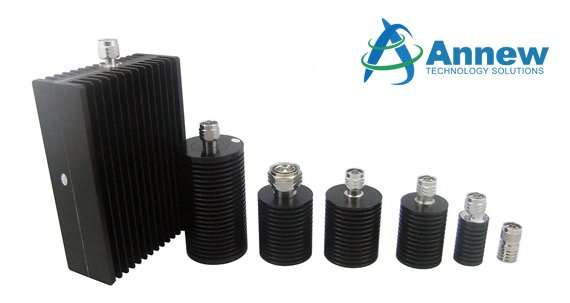How to Choose a Dummy Load?

RF Dummy Load(Radio Frequency dummy load)
Before talking about the RF dummy load, let’s figure out what a RF dummy load is,
it is a kind of passive component.Low power dummy load(also called RF load terminations or RF load),
it is used as the substitute of an antenna during radio transmitter tests.
Not only engineers use RF dummy load to test the transmission line but also some radio amateurs use load
when they try to connect their transmitter radio frequency (RF) output with a non-radiating load.
What are the functions of RF dummy load?
1.When test a radio transmitter, a load acts as protector of the transmitter. If there is no such a dummy load, the transmitter may result in being damaged. An antenna is the normal load for the test, while a dummy load is the replacement of the antenna. A dummy load with 50 ohms gives your transmitter the proper resistance, protecting it at its final RF amplifier stage,so it is also called 50 ohm dummy load.
2.When test and adjust the transmitter, you may receive other radios signal on your test frequency, which can cause interference. The dummy load is able to avoid RF wave reflections which can cause distortion of information. As a result, you can get correct adjustments.In the same way, you won’t QRM (artificial interference to transmission) others’ transmitter adjustment.
3.it is also used as a substitute of the loudspeaker during audio amplifier testing.
The performance of RF dummy load
A dummy load is a pure resistance normally . The dummy loads on the market are mainly consisted of gold plated brass center conductor, nickel plated brass coupling nut, PTFE insulator, parallel aluminum oxide ceramic resistors,black passivated aluminum heatsink or other alloy heatsink . Radio amateurs, may have their own versions of dummy loads made of less advanced materials for .
These dummy loads include:1W,2W,5W,10W,20W,30W,50W,60W,100W,200W ect…all depending on the specific materials they are made of.
The amount of resistance a dummy load produces should be the same as the impedance of the antenna or transmission line used with the transmitter. The standard is 50 ohms or 75 ohms,in RF situation,we use 50 ohms load.
How to choose a dummy load?
Choosing dummy load is more about technical parameters than material construction.
There is no specific standard for materials.
Tip1:The dummy load should be the same resistance as the antenna does,
as its role replacement of antenna play,it should match transmission line well.
Tip2:When to test, the dummy load absorbs the radio signal and energy delivered by the
transmitter. At later phrase, the absorbed energy will be converted to heat.Therefore,
a good dummy has to be capable of tolerating the power/heat,it is so important of a
heatsink.There are many kinds of heatsink,oil,water,alloy,aluminium ect…mainly on the
market the heatsink of dummy load is aluminium and alloy,we also called it dry heatsink load.
Tip3, Theoretically,an ideal dummy load reads a standing wave ratio (SWR) of 1: 1.But actually
it can not meet the ideal target,It is better to get close to 1:1, In antenna situation,1.5:1 is acceptable.
Tip4,When order a dummy load,you may tell supplier:
1.Power:how many watts?
2.Frequency:How many Hz
3.Connector type:N type?DIN type?or other?
Any questios,please feel free to contact us.

